The Custom House, one of Dublin’s most stately buildings with hundreds of years of history, opened a visitor centre this month. It will interest those who would like to put a tumultuous period of Irish history into context, and maybe discover some family links.
The Custom House – Dublin’s Newest Museum is a tour through history
The opening of the Custom House Visitor Centre will be of interest to visitors wanting to explore the city’s history. It traces the history from 1791, when the Custom House opened, it will reveal a lot of known history and some unknown stories. The chronological tours highlights what was happening at specific times and who the principal figures were.
The building is internationally famous as a perfect example of the classical work by renowned 18th century architect, James Gandon. He also designed the House of Lords on College Green, Leinster House, the Four Courts and many other state and civil buildings.
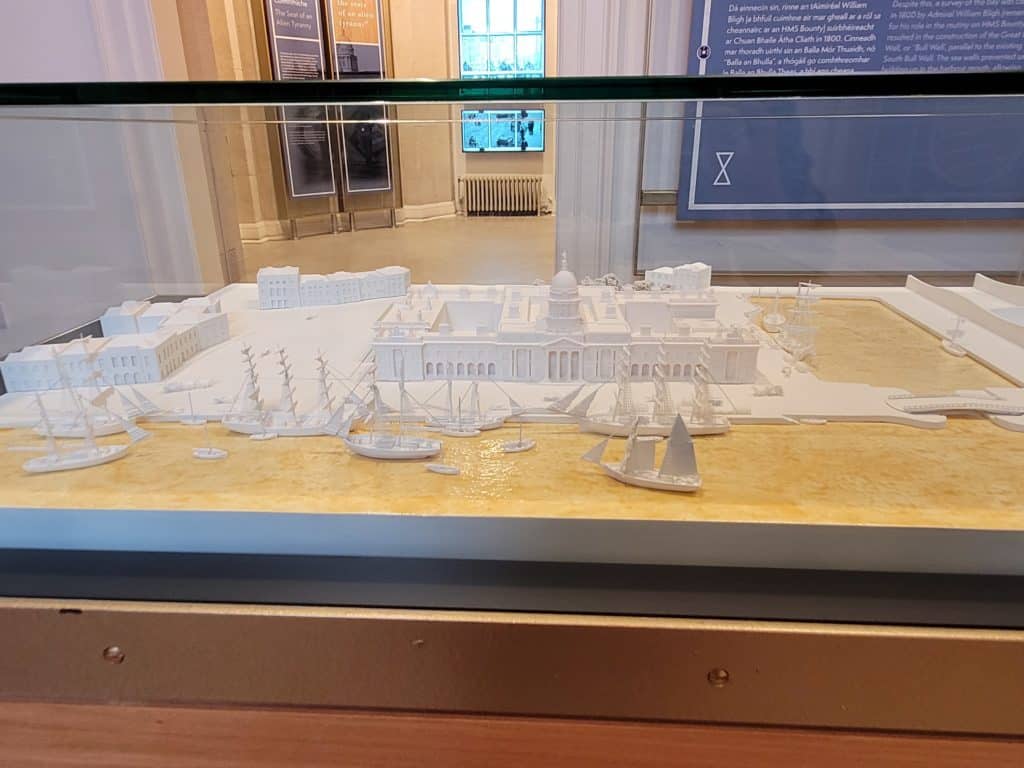
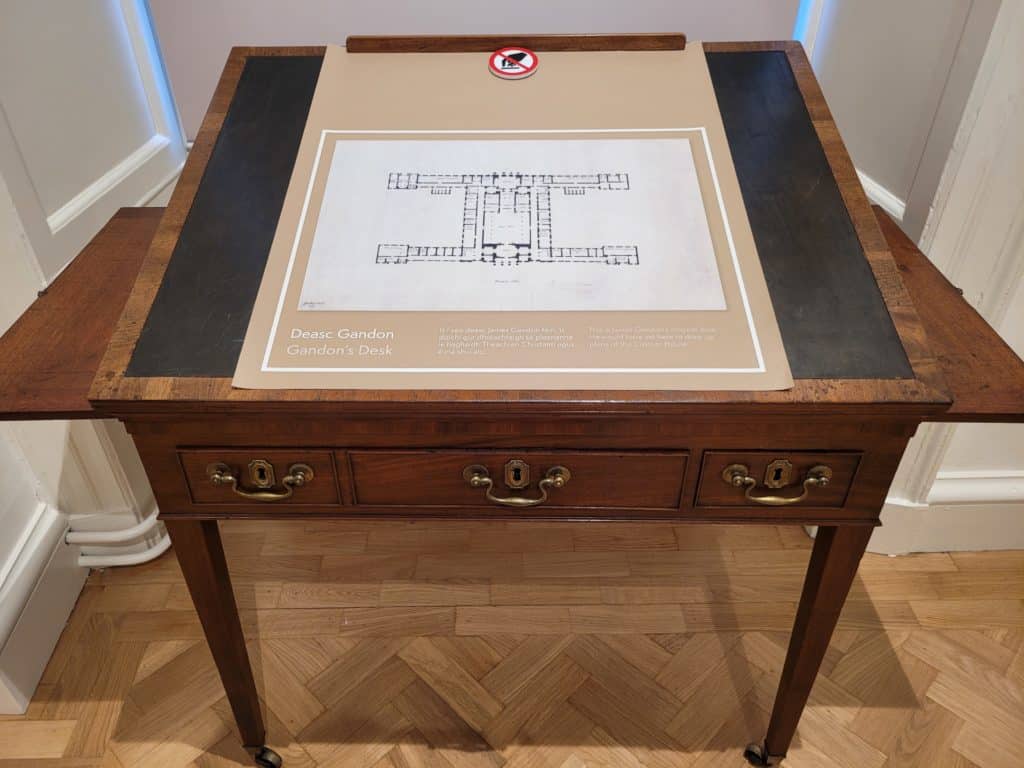
The first room describes the ideas behind the building of such a stately Custom House in Dublin. In the 1800s business was booming and Dublin was a premier trading city of the British Empire. Here you will see the plans for the building, and also James Gandon’s desk, the very one he used every day.
Gandon took some of his ideas from the river gods of Ireland and the Custom House has a series of 14 sculpted heads known as the Riverine Heads. Each one represents each of the rivers in Ireland and are on the outside of the building. He also used different geometries, like octagons and curves to show off the beautiful cut stones.
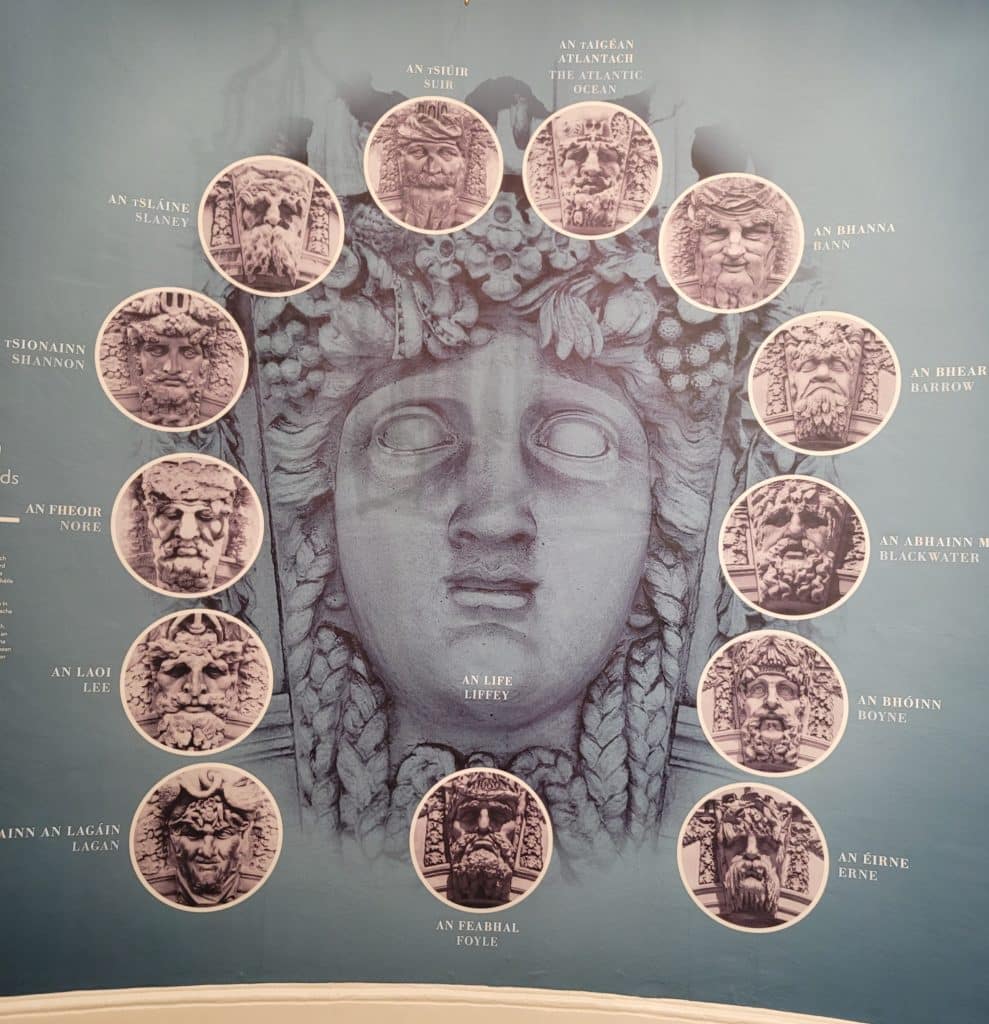
The history of Ireland at Dublin’s Custom House is brought to life by the figures that played roles in its story. Admiral Bligh – of the HMS Bounty – came up with the idea of the North Bull Wall to prevent silting of the harbour. This wall enabled ships to travel up the river to moor outside the Custom House. The wall is 2.9km and is a walk that is still enjoyed today.
Another character you see is Napper Tandy, United Irishman and member or Dublin Corporation. The famous politician campaigned against the building of the Custom House. In the 1800s as the Act of Union began to to take effect, Dublin’s position began to decline. And so too did trade and commercial life. Belfast became more important as a centre for trade.
Burning of the Custom House
The early 1900s saw the rise of nationalism and republicanism in Ireland. At that time the Custom House then housed departments of the Government. It was beginning to be seen in republican propaganda as “one of the seats of alien power.”
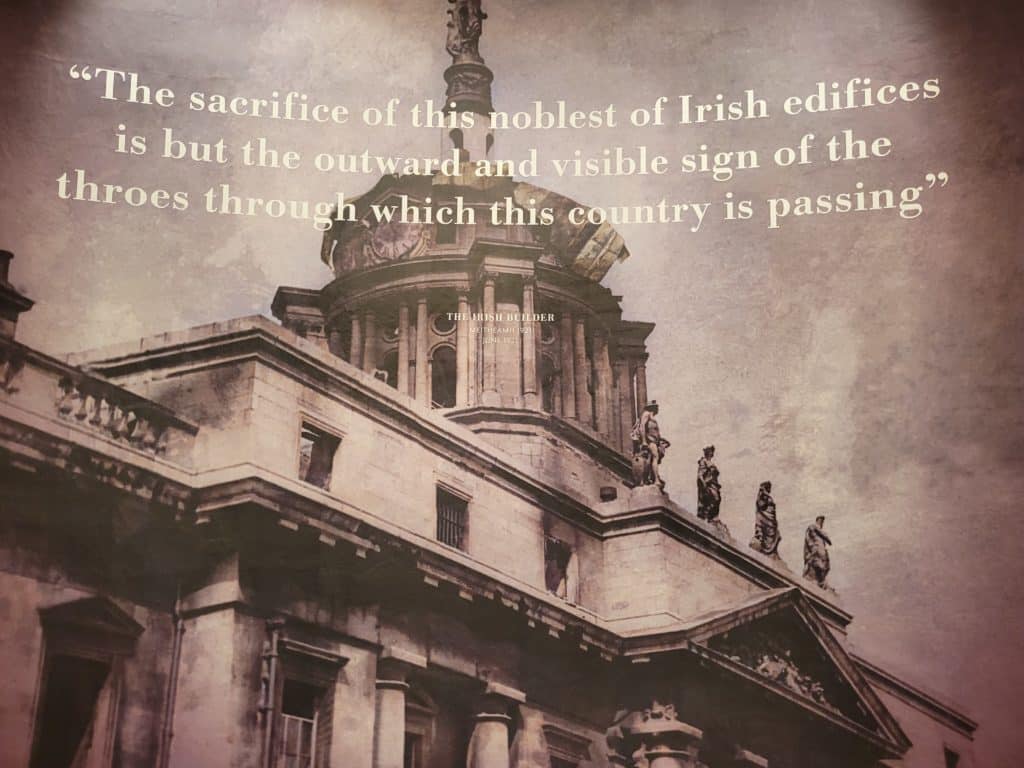
It became the target for Republicanism and this led to the burning of the Custom House on 25 May, 1921. The fire burned for five days, fuelled by the tons of paper inside. The story is told in great detail with images, videos and stories from those involved. It includes details of how the burning was planned and of those who took part.
The burning of the Custom House caused endless problems for people in future years. It housed many records of births, marriages, deaths, wills and probates, some dating from the 1600s. My own grandfather had difficulty trying to obtain a birth certificate in subsequent years.
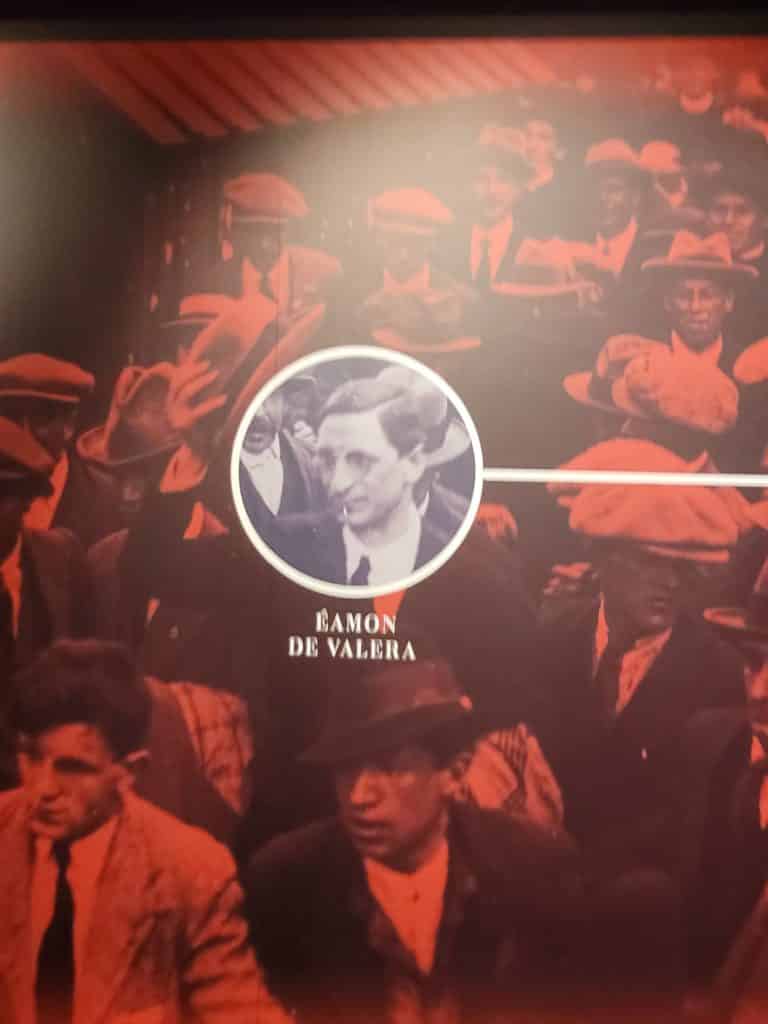
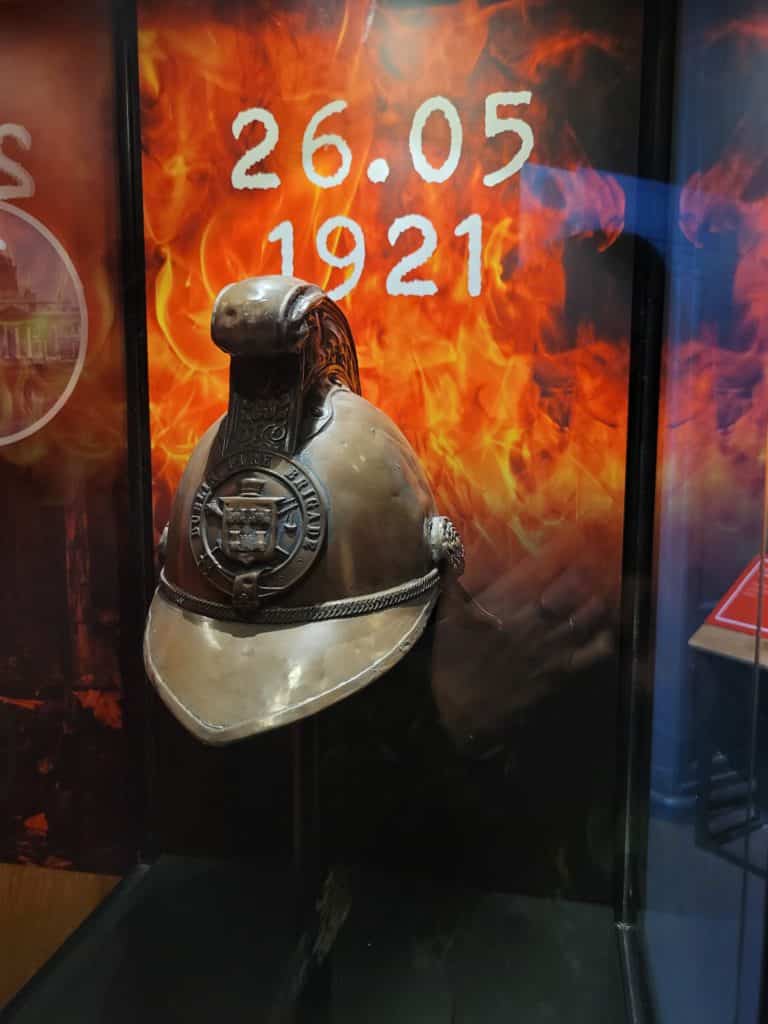
Dublin Fire Brigade helmet from 1921
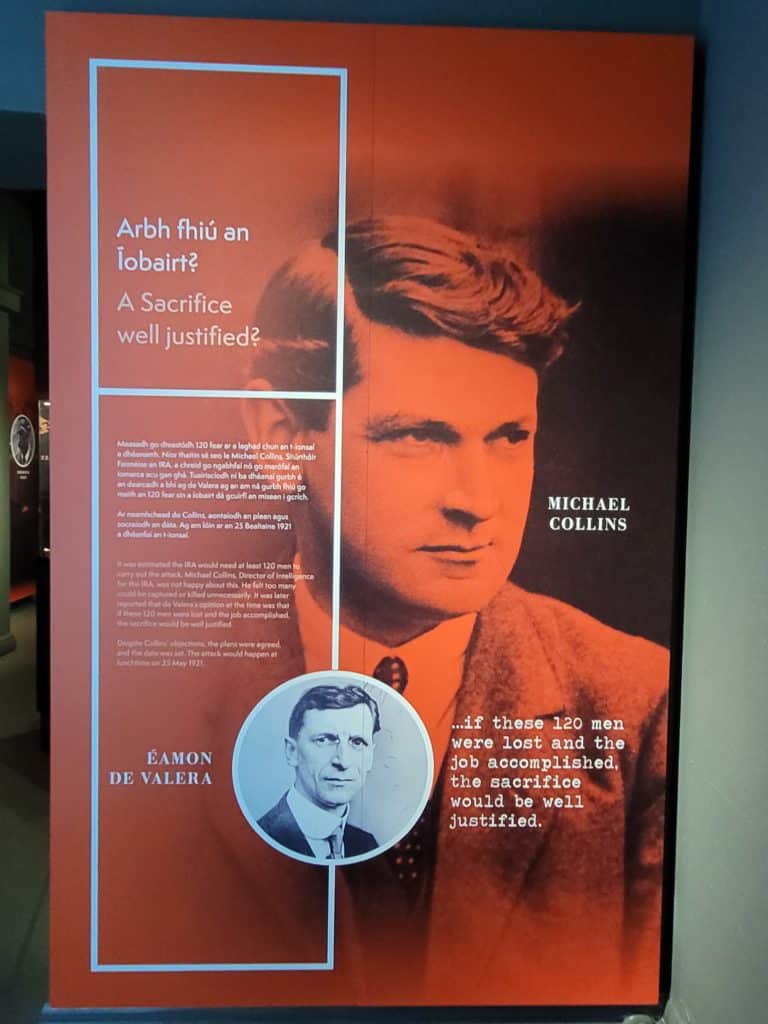
The story continues with the re-building of the Custom House. The Anglo Irish Treaty in December 1921 brought hostilities to an end. The Custom House was rebuilt by the new Free State. It now houses the government departments of Housing, Local Government and Heritage. The Custom House is free to visit, and open seven days a week from 10am – 4.45pm. The entrance is on the riverside. You need to book in advance on Heritageireland.



